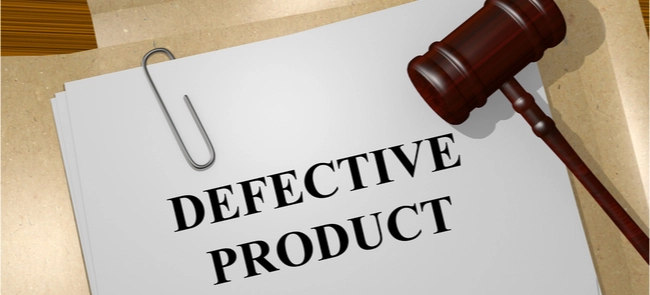Defective product cases often happen in our consumer-driven society, but what exactly are they? When are products considered “defective,” and how do you know if you’re eligible for a case? If you ask these questions, this guide is for you.
We’ll discuss the different types of defects within a product, legal requirements for claiming damages from companies, and some examples of successful defective product cases. By the end of this post, you should better understand what defines a defective product and how to file an actionable claim against the responsible party. So let’s get started.
What Evidence Is Required in a Defective Product Case
Defective product cases are relatively common, and they can occur anytime a product is sold that has an issue that causes it to be dangerous to the consumer. Defective product cases can lead to serious injuries, illnesses, or even death.
That’s why defective products lawyers play such an essential role in these cases. They work to ensure that consumers have the right to pursue legal action against companies that have produced and sold products that have caused harm.
What is a Defective Product Case, and Why Should You Care About It
Before diving into the details of a defective product case, it’s essential to understand what it is and why you should care about it. A defective product case occurs when a consumer is harmed due to using a hazardous product. This harm can be physical or financial. In either case, the consumer can sue the company that produced and sold that product.
Types of Product Defects that Can Lead to a Defective Product Case
Various types of defects can lead to a defective product case. The most common types are manufacturing and design defects. Manufacturing defects occur when the product is faulty due to an error in production.
Design defects are issues with the product’s design, leading to a hazardous product. Marketing defects, on the other hand, refer to errors in how the product is marketed or advertised.
Examples of Defective Products That Have Led to Claims
There are numerous examples of defective products that have caused serious harm to consumers. One common example is tobacco products. Tobacco companies knew about the health hazards associated with smoking yet failed to warn people about them.
This led to numerous lawsuits and payouts of millions of dollars to consumers who suffered from smoking-related illnesses. Another example is medical devices. Products like hip replacements or breast implants have been known to cause harm to patients due to manufacturing or design defects.
How A Consumer Can Pursue A Legal Claim for Damages
For a consumer to pursue a legal claim for damages in a defective product case, they must have been harmed by the product. This harm can be physical or financial, as mentioned earlier. The consumer must also be able to prove that the product was defective and that the defect caused harm. This is where defective products lawyers come in.
They can help collect evidence to support the claim and build a case against the company. Certain evidence is required when pursuing a legal claim for damages in a defective product case. This includes proof of purchase, medical records of physical harm, and documentation of any financial losses.
The Importance of Defective Products Lawyers in Pursuing Legal Claims: In Conclusion
Defective product cases can be complex and challenging. That’s why it’s essential to seek legal representation from defective product lawyers if a product has harmed you.
They can help navigate the legal process and work to ensure that you receive the compensation you are entitled to. Remember, as a consumer, you can hold companies accountable for producing and selling dangerous products that can potentially harm others as well.










